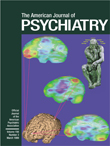Dementia With Lewy Bodies: Clinical, Pathological and Treatment Issues
Dementia with Lewy bodies is of marked importance to psychiatrists, particularly geriatric psychiatrists or other psychiatric practitioners delivering care to the elderly. Two features of dementia with Lewy bodies make it particularly relevant to psychiatric practice: 1) the disorder frequently presents with psychiatric manifestations and 2) the patients have a markedly adverse response to conventional neuroleptic medications, and these agents should be avoided in this setting.
Clinically, dementia with Lewy bodies is characterized by a gradually progressive dementia syndrome with at least two of the following three cardinal features: 1) fluctuations in cognition, 2) visual hallucinations, 3) parkinsonism. Supportive clinical features include exaggerated response to neuroleptic medications, delusions, gait disturbance, and episodes of loss of consciousness. The disorder is unique among neurological illnesses in having a psychiatric criterion—visual hallucinations—as a diagnostic feature and, as such, demonstrates the progressive integration of neurobehavioral and neuropsychiatric features into our understanding of dementing illnesses. Pathologically, dementia with Lewy bodies features multiple neuritic plaques similar to those seen in Alzheimer’s disease as well as brainstem and cortical Lewy bodies. There are relatively few neurofibrillary tangles. The patients tend to respond relatively well to treatment with cholinesterase inhibitors, and when psychotropic agents are required to control delusions and agitation, novel antipsychotics are preferred.
Dementia With Lewy Bodies is the single most comprehensive discussion of the many intriguing aspects of this disorder. The editors of the book have provided leadership in identifying the disorder and developing clinical and pathological criteria for diagnosis. The volume is divided into three sections, one each dealing with clinical, pathological, and treatment dimensions of the illness. The clinical section includes discussions of the neuropsychiatric, neuropsychological, and neuroimaging manifestations of dementia with Lewy bodies as well as discussions of an approach to clinical diagnosis. Frequent misdiagnoses are described. The section on pathology discusses the different disorders that include Lewy bodies as part of the pathology, as well as cytoskeletal abnormalities, altered tau processing, and other structural changes. The section devoted to treatment of dementia with Lewy bodies emphasizes cholinergic approaches to the cognitive disturbance.
Each of the sections contains 9 to 14 chapters and is followed by a r�sum� of discussions that followed presentation of the original papers at an international workshop held at Newcastle-on-Tyne, England. Each of the chapters represents a mini-review of a specific area concerning dementia with Lewy bodies, and alternate points of view of unresolved issues are well represented. For example, it is currently unclear whether dementia with Lewy bodies is best viewed as a variant of Alzheimer’s disease or as a separate and distinct clinical condition. Authors defending both of these views are included in the volume’s authorship, providing the reader with an updated view of research questions. The editors have managed that most difficult task of producing a volume with uniformly high-quality chapters presented at similar levels of sophistication. The individual who invests the time in reading this volume will be well rewarded by a comprehensive knowledge of the current understanding of dementia with Lewy bodies. This book should be read by practitioners involved in neuropsychiatric and geriatric psychiatry, as well as by those practitioners interested in a new window on brain-behavior relationships.



